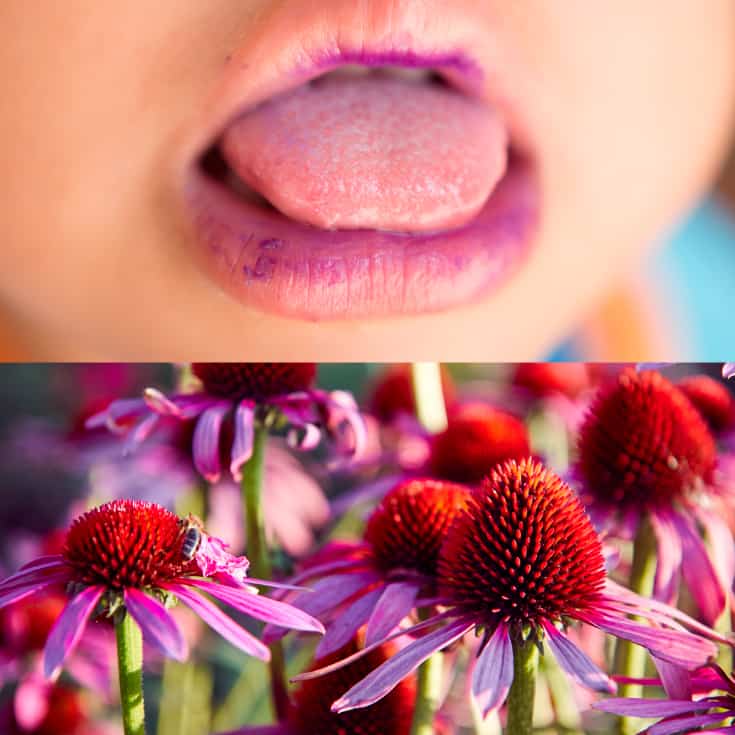This Dr. Axe content is medically reviewed or fact checked to ensure factually accurate information.
With strict editorial sourcing guidelines, we only link to academic research institutions, reputable media sites and, when research is available, medically peer-reviewed studies. Note that the numbers in parentheses (1, 2, etc.) are clickable links to these studies.
The information in our articles is NOT intended to replace a one-on-one relationship with a qualified health care professional and is not intended as medical advice.
This article is based on scientific evidence, written by experts and fact checked by our trained editorial staff. Note that the numbers in parentheses (1, 2, etc.) are clickable links to medically peer-reviewed studies.
Our team includes licensed nutritionists and dietitians, certified health education specialists, as well as certified strength and conditioning specialists, personal trainers and corrective exercise specialists. Our team aims to be not only thorough with its research, but also objective and unbiased.
The information in our articles is NOT intended to replace a one-on-one relationship with a qualified health care professional and is not intended as medical advice.
DHT (Dihydrotestosterone): Its Role in Hair Loss & How to Reduce It
December 14, 2019

We often hear about the negative effects associated with having too high or too low levels of testosterone — such as when it comes to causing acne in women and muscle loss in men. But there’s another androgen (or hormone responsible for male characteristics) that is even more potent and equally responsible for these same types of problems: DHT.
According to research studies, it’s responsible for more than 95 percent of cases of hair loss in men (also called androgenetic alopecia).
What Is DHT?
DHT stands for dihydrotestosterone, which is an endogenous androgen sex hormone. In addition to DHT, it’s sometimes referred to as DH or 5α-dihydrotestosterone.
This hormone, which is converted from testosterone (another androgen, which basically means “male hormone”), is associated with many masculine physical characteristics. In fact, Harvard Medical School explains that the word androgen comes from the words meaning “man-maker.
This androgen also facilitates changes that take place during puberty and affects sexual arousal.
According to the Society for Endocrinology, “Almost 10% of the testosterone produced by an adult each day is converted to dihydrotestosterone, by the testes and prostate (in men), the ovaries (in women), the skin and other parts of the body.”
DHT is more potent than testosterone and present in smaller amounts. The level of DHT that someone has depends on the amount of testosterone present.; the more testosterone that’s available, the more that’s converted to dihydrotestosterone.
Testosterone production is controlled by the hypothalamus and the pituitary gland, which are considered the “control centers” of the brain.
What Does It Do?
Although this hormone is often associated with thinning hair, acne and other unpleasant symptoms, we know that there are also DHT benefits that pertain to both sexes. Below are some of the important roles that DHT has, as described by the Endocrine Society:
- Helps with onset of puberty in both boys and girls, leading to development of the genitals, deeper voice and changes in body composition — less is known about how it affects puberty in females compared to males
- Leads to growth of body hair, including pubic hair
- Causes the prostate to grow in males
- Increases male sexual behavior (when combined with testosterone or testosterone boosters)
Does DHT build muscle? To some extent it helps adults maintain muscle mass as they age, just like testosterone does.
It also benefits reproductive health, fertility and sex drive.
Role in Hair Growth and Hair Loss
The American Hair Loss Association states, “While testosterone is at the core of the balding process, DHT is thought to be the main culprit.”
It’s now believed that DHT contributes to androgenetic alopecia (male or female pattern baldness) by binding to receptors in the oil glands of scalp follicles, causing them to shrink.
In order for testosterone to be converted to DHT, an enzyme called Type II 5-alpha-reductace is needed. This enzyme is stored inside of hair follicle’s oil glands.
Hair growth and loss are affected by DHT because this hormone causes follicles to miniaturize and shortens their life spans, eventually causing them to stop producing hair altogether. When DHT is suppressed, such as due to medications/interventions aimed at stopping hair loss, hair follicles continue to thrive and grow new hair, working as a natural treatment for thinning hair.
It’s estimated that about two-thirds of American men will experience some degree of appreciable hair loss by their mid-30s, and this number rises to to about 85 percent by the time a man reaches his 50s.
Here is how androgenic alopecia contributes to hair loss:
- It commonly causes thinning on all areas of the scalp in women.
- In men, thinning usually appears in distinct patterns of baldness that includes a receding hairline and thinning crown. This is because the temples and mid-anterior scalp are thought to be most sensitive to DHT’s effects.
- Some women may have a combination of the two patterns described above.
- The amount of hair loss that adults develop is highly tied to genetics, meaning you’re likely to experience a similar amount as your parents. Genetics play a role in forming androgen receptors within follicles, which leads some people to be more susceptible to hair thinning caused by hormonal changes than others.
Women normally have much lower levels of both testosterone and DHT in their bodies compared to men, but when levels rise, they can suffer from DHT-triggered hair loss just like men. Even if a blood test shows that DHT levels are within the “normal” range for a woman, a slightly higher-than-normal level may still contribute to hair loss among some women who are sensitive to the effects of androgens.
This sometimes occurs if a woman’s “female hormone” levels (such as estrogen) decrease, which means that the effects of androgen hormones are not as balanced.
What causes androgenic alopecia to develop in women? Some hair loss causes tied to high androgen levels include:
- ovarian cysts
- high-androgen birth control pills
- pregnancy
- menopause
- genetic susceptibility
- stressful life events
How It Affects People
It’s possible to produce either too much or too little DHT. Men are more likely to experience symptoms if they make too little DHT, while women are more likely to experience symptoms if they make too much.
On the other hand, in men, high levels cause few identifiable changes, while low levels in women have the same result.
High levels of DHT are usually a result of excess testosterone production. This can happen in both women and men.
It’s usually more obvious if a woman has high DHT because it causes physical changes that are considered masculine. For example, among women, high DHT symptoms may include:
- Increased body, facial and pubic hair growth (called hirsutism)
- Irregular periods or stopping of menstrual periods all together (called amenorrhoea)
- Development of acne, often on the chin, jaw and back
- Abnormal changes to the genitalia
Men who produce too little DHT may experience some of these symptoms:
- Delayed onset of puberty (this can affect women too)
- Reduced pubic and body hair
- Abnormal development of the genitals in the womb (he may be born with ambiguous genitalia that resembles female genitalia)
In the past, high DHT levels in men were thought to pose certain health risks, but this may not actually be the case, according to recent research studies.
Links have been made between high DHT and enlarged prostate, higher risk for development of prostate cancer, and higher risk for coronary heart disease. However, a number of long-term studies have failed to show that elevated DHT has these negative effects.
The role of DHT in these conditions remains controversial, and ongoing research is being done to figure out if DHT blockers and inhibitors may work as therapy options. What does seem clear is that DHT stimulates the growth of prostate cells, which is normal during puberty but can become problematic in older men.
How to Reduce It
Interventions aimed at reducing hair loss target both DHT production and DHT receptor binding within hair follicles.
What do DHT blockers do?
- Blockers prevent the conversion of testosterone to dihydrotestosterone, also helping stop DHT from binding to 5-AR receptors in hair follicles. In other words, they can help remove DHT from the scalp.
- The most popular example of an oral DHT blocker is finasteride (which goes under brand names Proscar and Propecia). This is taken by mouth and available by prescription only.
- DHT blockers are intended for use by men only and should never be taken by a woman or a child, since this can lead to various hormonal complications during pregnancy and development.
Will reducing DHT really regrow hair, according to studies? One study found that the majority of men taking finasteride experienced improvements in hair loss.
The study also points out: “Currently, minoxidil and finasteride which are Food and Drug Administration (FDA)-approved, and HairMax LaserComb, which is FDA-cleared, are the only treatments recognized by the FDA as treatments of androgenetic alopecia.”
Another study published in the Journal of Investigative Dermatology found that more than 80 percent of men taking finasteride preserved their original hair follicle counts, and more than 65 percent experienced hair regrowth. Finasteride is typically taken in doses of one milligram daily.
Another treatment option is a DHT inhibitor, which decreases the amount of DHT you produce, helping less reach the scalp while also reducing DHT’s effects elsewhere. Medications that improve blood flow to the scalp may also be used in conjunction with blockers and inhibitors to promote hair growth.
5alpha-reductase inhibitors are also used as treatments for benign prostatic hyperplasia (or BHP, characterized by growth of the gland with aging ). In doses of about five milligrams, the drug Proscar helps some men with BPH.
This type of drug seems to reduce prostate volume, improve symptoms, and reduce the risk of acute urinary retention and need for BPH-related surgery. Emerging studies show that DHT blockers can play a role in prostate cancer treatment too.
What other natural remedies are available for lowering DHT?
While less research has focused on this topic, there are ome “natural DHT blockers” that some people find helpful. Natural remedies for hair loss include special shampoos and creams, green tea, pumpkin seed oil, biotin supplements, omega-3s, zinc, adaptogen herbs, and herbal supplements like saw palmetto.
These can help to some extent but usually not as much as prescriptions like finasteride.
Low level laser therapy is another treatment option, which some people may feel more comfortable with, that shows promise for kickstarting hair growth. It works by increasing blood flow in the scalp and stimulating metabolism in catagen or telogen follicles.
Finally, consider trying rosemary essential oil and cedarwood essential oil (such as in this Rosemary, Cedarwood & Sage Hair Thickener recipe), which some people find helps stimulate hair growth, slows graying and treats conditions affecting the scalp, such as dandruff.
Does exercise reduce DHT?
According to some experts, your workout routine may have an effect on whether you experience symptoms tied to irregular DHT levels, including hair loss or hair growth.
Exercise can be both a natural DHT blocker and potentially a means of increasing DHT/testosterone levels (and therefore hair loss), depending on the type and frequency.
Doing lots of aerobic/cardio exercise — such as endurance exercise like cycling or running for hours — may reduce levels in the bloodstream, while lots of weightlifting can increase testosterone levels and therefore DHT levels. Muscle building tends to lead to higher testosterone levels.
Lots of cardio, however, has been shown to decrease testosterone because it increases secretion of cortisol.
The best way to avoid having exercise lead to hormonal imbalances is to:
- make sure you take enough rest days
- combine exercise with lifestyle changes that manage stress
- make sure you eat a balanced, healthy diet
Can any foods block DHT?
There’s some evidence that if you include “DHT blocker foods” in your diet you may experience a bit less hair loss, although more research is needed to confirm how well this works.
For example, zinc, the antioxidant lycopene, the amino acid L-lysine, high-fiber foods, biotin foods and plant foods with some other phytonutrients may be capable of inhibiting DHT to some extent.
Foods that can potentially block the effects of high DHT include:
- pumpkin seeds (a great source of zinc)
- tomatoes
- watermelon
- carrots
- mangoes
- nuts like almonds, walnuts, peanuts, pecans
- seeds like chia and flax (high in healthy fats, fiber and minerals)
- wheat germ
- greens like spinach, Swiss chard and kale
- berries
- bananas
- eggs
- fish like mackerel, sardines, tuna and salmon (high in omega-3s)
- caffeine/coffee
A diet high in processed foods, added sugar and trans fats may also contribute to metabolic problems, inflammation and hormonal imbalances that may worsen DHT-induced health problems. Consuming supplements/protein powders that contain growth hormones can do the same by increasing testosterone production.
Risks and Side Effects of DHT Blockers
Because DHT is a hormone that has a number of roles in the body, blocking its effects can cause various reactions. Possible DHT blocker side effects include:
- Sexual dysfunction/erectile dysfunction
- Accumulation of body fat around the breast area
- Skin rashes
- Digestive upset and sometimes vomiting
- Darkening and thickening of facial and upper body hair
As mentioned above, women and children should never take DHT blocker medications.
Conclusion
- What is DHT? It stands for dihydrotestosterone, which is an endogenous androgen sex hormone that is converted from testosterone.
- DHT is the primary hormone responsible for male pattern baldness. It can also contribute to hair thinning in women and other symptoms, like changes in body hair, acne and sexual dysfunction when levels are too high or low.
- What is a DHT blocker? It’s a medication or supplement that prevents DHT from binding to 5-AR receptors in hair follicles, stopping them from shrinking and causing hair loss.
- Other than medications, here’s how to reduce DHT: eat a healthy diet, manage stress, consider laser therapy, and try supplements like green tea, pumpkin seed oil, biotin and herbs like saw palmetto.








